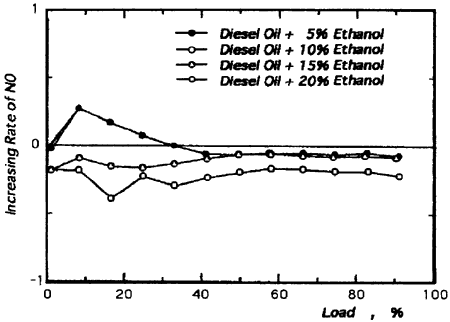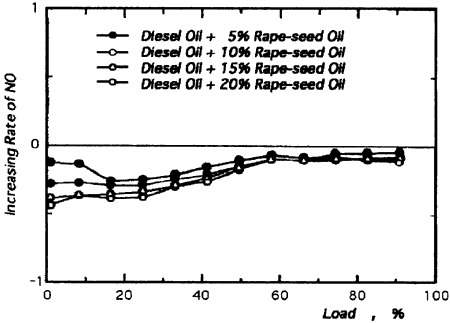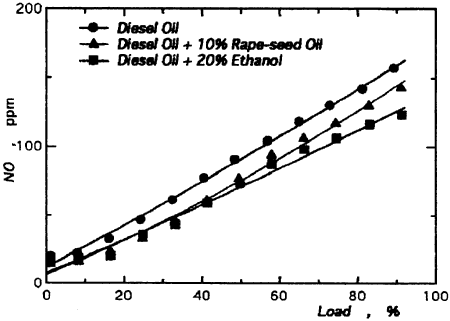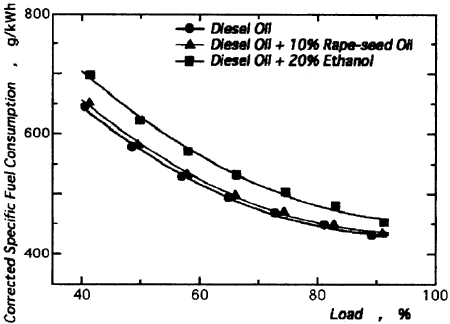As shown in Fig. 18, the case of 5% (vol.) alcohol blended fuel is a littlie higher than the case of pore diesel fuel oil in the light load condition. But from Fig. 19, the case of all rape-seed oil blended fuels are effective to the NOx reduction.

Fig. 18 NO Increasing Rate of Ethanol Blended Fuel

Fig. 19 NO Increasing Rate
The main factor in NO generation is the temperature of combustion. If we can decrease the flame temperature, then we can reduce NO generation. There are several ways to achieve this, such as the lean mixture burning, partial rich mixture combustion in main flame region, water injection homogenous combustion, addition of lower caloric heat value fuel. The offset from equivalence ratio of fuel / air mixture can produce lower flame temperature that achieves lower NO emission. (3
Figure 20 shows the NO concentration in exhaust gas in changing with the blended oil amount and species. The caloric heat of ethanol is lower than rape-seed oil and almost half of diesel fuel oil. This property makes it possible to reduce NO in high load condition. As shown in the figure, at maximum load, NO emission becomes 20 ppm lower for the case of 20% (vol.) ethanol blended fuel compared to the 10%(vol.) rape-seed blended fuel.

Fig. 20 NO Density of Exhaust Gas
Specific fuel consumption of the conditions are shown in Fig. 21. In the both of blended fuel cases, fuel consumption becomes worse about 7% compare to pure diesel oil condition.

Fig. 21 Fuel Consumption Curve
4. CONCLUSIONS
The performance results of a Diesel engine were as follows:
(1) The ignition lag was 5 degree CA than regular combustion that uses pore diesel oil.
(2) The maximum pressure was reduces 8kg/cm2 than the regular combustion, so NOx emission was reduced.
BACK CONTENTS NEXT